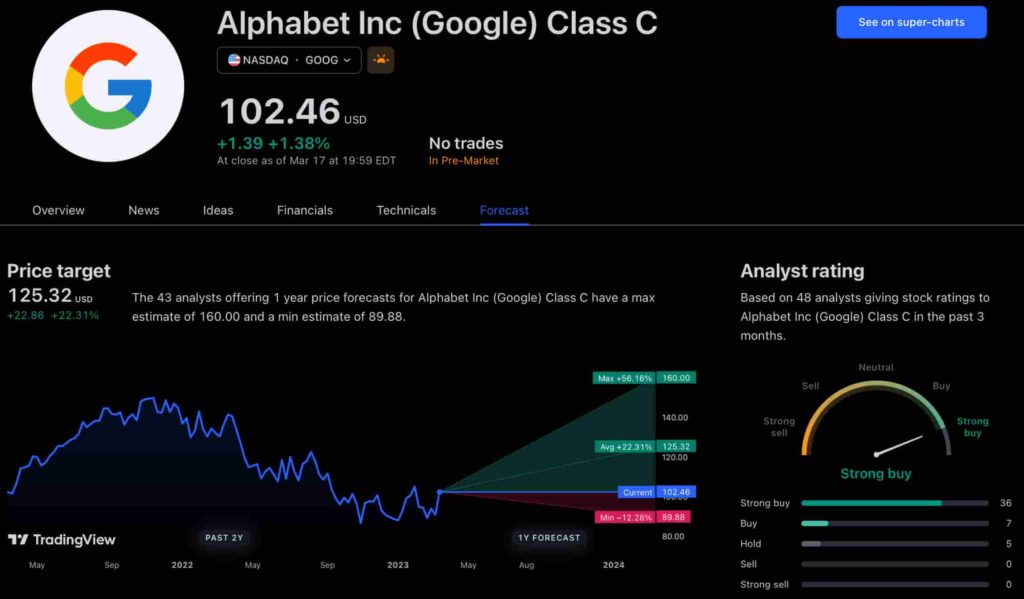The new app is called watchGPT and as I tipped off already, it gives you access to ChatGPT from your Apple Watch. Now the $10,000 question (or more accurately the $3.99 question, as that is the one-time cost of the app) is why having ChatGPT on your wrist is remotely necessary, so let’s dive into what exactly the app can do.
NEWS
Twitter rewrites Developer Policy to better support academic research and use of ‘good’ bots

Twitter today updated its Developer Policy to clarify rules around data usage, including in academic research, as well as its position on bots, among other things. The policy has also been entirely rewritten in an effort to simplify the language used and make it more conversational, Twitter says. The new policy has been shortened from eight sections to four, and the accompanying Twitter Developer Agreement has been updated to align with the Policy changes, as well.
One of the more notable updates to the new policy is a change to the rules to better support non-commercial research.
Twitter data is used to study topics like spam, abuse and other areas related to conversation health, the company noted, and it wants these efforts to continue. The revised policy now allows the use of the Twitter API for academic research purposes. In addition, Twitter is simplifying its rules around the redistribution of Twitter data to aid researchers. Now, researchers will be able to share an unlimited number of Tweet IDs and/or User IDs, if they’re doing so on behalf of an academic institution and for the sole purpose of non-commercial research, such as peer review, says Twitter.
The company is also revising rules to clarify how developers are to proceed when the use cases for Twitter data change. In the new policy, developers are informed that they must notify the company of any “substantive” modification to their use case and receive approval before using Twitter content for that purpose. Not doing so will result in suspension and termination of their API and data access, Twitter warns.
The policy additionally outlines when and where “off-Twitter matching” is permitted, meaning when a Twitter account is being associated with a profile built using other data. Either the developer will need to obtain opt-in consent from the user in question, or they can only proceed if the information was provided by the person or is based on publicly available data.
The above changes are focused on ensuring Twitter data is accessible when being used for something of merit, like academic research, and that it’s protected from more questionable use cases.
Finally, the revamped policy clarifies that not all bots are bad. Some even enhance the Twitter experience, the company says, or provide useful information. As examples of good bots, Twitter pointed to the fun account @everycolorbot and informative @earthquakesSF.
Twitter identifies a bot as any account where behaviors like “creating, publishing, and interacting with Tweets or Direct Messages are automated in some way through our API.”
Going forward, developers must specify if they’re operating a bot account, what the account is, and who is behind it. This way, explains Twitter, “it’s easier for everyone on Twitter to know what’s a bot – and what’s not.”
Of course, those operating bots for more nefarious purposes — like spreading propaganda or disinformation — will likely just ignore this policy and hope not to be found out. This particular change follows the recent finding that a quarter of all tweets about climate change were coming from bots posting messages of climate change denialism. In addition, it was recently discovered that Trump supporters and QAnon conspiracists were using an app called Power10 to turn their Twitter accounts into bots.
Twitter says since it introduced a new developer review process in July 2018, it has reviewed over a million developer applications and approved 75%. It also suspended more than 144,000 apps from bad actors in the last six months and revamped its developer application to be easier to use. It’s now working on the next generation of the Twitter API and is continuing to explore new products, including through its testing program, Twitter Developer Labs.
Facebook Faces Yet Another Outage: Platform Encounters Technical Issues Again

Uppdated: It seems that today’s issues with Facebook haven’t affected as many users as the last time. A smaller group of people appears to be impacted this time around, which is a relief compared to the larger incident before. Nevertheless, it’s still frustrating for those affected, and hopefully, the issues will be resolved soon by the Facebook team.
Facebook had another problem today (March 20, 2024). According to Downdetector, a website that shows when other websites are not working, many people had trouble using Facebook.
This isn’t the first time Facebook has had issues. Just a little while ago, there was another problem that stopped people from using the site. Today, when people tried to use Facebook, it didn’t work like it should. People couldn’t see their friends’ posts, and sometimes the website wouldn’t even load.
Downdetector, which watches out for problems on websites, showed that lots of people were having trouble with Facebook. People from all over the world said they couldn’t use the site, and they were not happy about it.
When websites like Facebook have problems, it affects a lot of people. It’s not just about not being able to see posts or chat with friends. It can also impact businesses that use Facebook to reach customers.
Since Facebook owns Messenger and Instagram, the problems with Facebook also meant that people had trouble using these apps. It made the situation even more frustrating for many users, who rely on these apps to stay connected with others.
During this recent problem, one thing is obvious: the internet is always changing, and even big websites like Facebook can have problems. While people wait for Facebook to fix the issue, it shows us how easily things online can go wrong. It’s a good reminder that we should have backup plans for staying connected online, just in case something like this happens again.
NEWS
We asked ChatGPT what will be Google (GOOG) stock price for 2030

Investors who have invested in Alphabet Inc. (NASDAQ: GOOG) stock have reaped significant benefits from the company’s robust financial performance over the last five years. Google’s dominance in the online advertising market has been a key driver of the company’s consistent revenue growth and impressive profit margins.
In addition, Google has expanded its operations into related fields such as cloud computing and artificial intelligence. These areas show great promise as future growth drivers, making them increasingly attractive to investors. Notably, Alphabet’s stock price has been rising due to investor interest in the company’s recent initiatives in the fast-developing field of artificial intelligence (AI), adding generative AI features to Gmail and Google Docs.
However, when it comes to predicting the future pricing of a corporation like Google, there are many factors to consider. With this in mind, Finbold turned to the artificial intelligence tool ChatGPT to suggest a likely pricing range for GOOG stock by 2030. Although the tool was unable to give a definitive price range, it did note the following:
“Over the long term, Google has a track record of strong financial performance and has shown an ability to adapt to changing market conditions. As such, it’s reasonable to expect that Google’s stock price may continue to appreciate over time.”
GOOG stock price prediction
While attempting to estimate the price range of future transactions, it is essential to consider a variety of measures in addition to the AI chat tool, which includes deep learning algorithms and stock market experts.
Finbold collected forecasts provided by CoinPriceForecast, a finance prediction tool that utilizes machine self-learning technology, to anticipate Google stock price by the end of 2030 to compare with ChatGPT’s projection.
According to the most recent long-term estimate, which Finbold obtained on March 20, the price of Google will rise beyond $200 in 2030 and touch $247 by the end of the year, which would indicate a 141% gain from today to the end of the year.
Google has been assigned a recommendation of ‘strong buy’ by the majority of analysts working on Wall Street for a more near-term time frame. Significantly, 36 analysts of the 48 have recommended a “strong buy,” while seven people have advocated a “buy.” The remaining five analysts had given a ‘hold’ rating.

The average price projection for Alphabet stock over the last three months has been $125.32; this objective represents a 22.31% upside from its current price. It’s interesting to note that the maximum price forecast for the next year is $160, representing a gain of 56.16% from the stock’s current price of $102.46.
While the outlook for Google stock may be positive, it’s important to keep in mind that some potential challenges and risks could impact its performance, including competition from ChatGPT itself, which could affect Google’s price.
Disclaimer: The content on this site should not be considered investment advice. Investing is speculative. When investing, your capital is at risk.
NEWS
This Apple Watch app brings ChatGPT to your wrist — here’s why you want it

ChatGPT feels like it is everywhere at the moment; the AI-powered tool is rapidly starting to feel like internet connected home devices where you are left wondering if your flower pot really needed Bluetooth. However, after hearing about a new Apple Watch app that brings ChatGPT to your favorite wrist computer, I’m actually convinced this one is worth checking out.
-

 MARKETING7 days ago
MARKETING7 days agoRoundel Media Studio: What to Expect From Target’s New Self-Service Platform
-

 SEO6 days ago
SEO6 days agoGoogle Limits News Links In California Over Proposed ‘Link Tax’ Law
-
SEARCHENGINES6 days ago
Daily Search Forum Recap: April 12, 2024
-

 SEARCHENGINES5 days ago
SEARCHENGINES5 days agoGoogle Core Update Volatility, Helpful Content Update Gone, Dangerous Google Search Results & Google Ads Confusion
-

 SEO5 days ago
SEO5 days ago10 Paid Search & PPC Planning Best Practices
-

 SEO7 days ago
SEO7 days agoGoogle Unplugs “Notes on Search” Experiment
-

 MARKETING6 days ago
MARKETING6 days ago2 Ways to Take Back the Power in Your Business: Part 2
-

 MARKETING4 days ago
MARKETING4 days ago5 Psychological Tactics to Write Better Emails














